Start Cooking
USDA Food Safe available now. (Released Dec 2023)
MeatNet™ Cloud connectivity coming Spring 2024
How the Predictive Thermometer works
-

Instant Read Mode
The CPT wakes up in Instant Read mode. Turn it on by removing it from the charger or Booster.
It takes 3-4 seconds to accurately report the temperature at the pointy end. Instant read turns off when you set a target temp on the Display or app (Predictive Cooking Mode).
-

Predictive Cooking (with Display)
Insert the Predictive Thermometer to at least the min line.
Press m- and s+ buttons to set the “cooking to” temperature.
Press “start” – the "cooking to" temp will stop blinking.
Apply heat (oven, smoker, grill, frying pan, etc… you get the idea).
The Display shows progress by indicating % of cooking completed.
At about 33% a countdown will appear: “time to cook.” That’s the prediction!
When that number hits 00:00, an alarm will sound to let you know your food is ready.
Enjoy!
-
Predictive Cooking (with App)
Insert the CPT to at least the min line.
Tap "predict" on the main screen.
Set your temp, then tap "begin prediction."
Then follow the same steps as above.
To choose between Cº and Fº: tap the three dots (right edge of the app, near ready in).
Cooking Guides
Reverse Seared Grilled Steaks
Here's how I reverse sear my steaks on a charcoal grill.
Reverse Seared Grilled Steaks
Here's how I reverse sear my steaks on a charcoal grill.
Simple Salmon
Here's a simple technique for crispy pan-roasted salmon.
Simple Salmon
Here's a simple technique for crispy pan-roasted salmon.
Simple Roast Chicken
Here's a foolproof recipe for a simple and juicy roast chicken.
Simple Roast Chicken
Here's a foolproof recipe for a simple and juicy roast chicken.
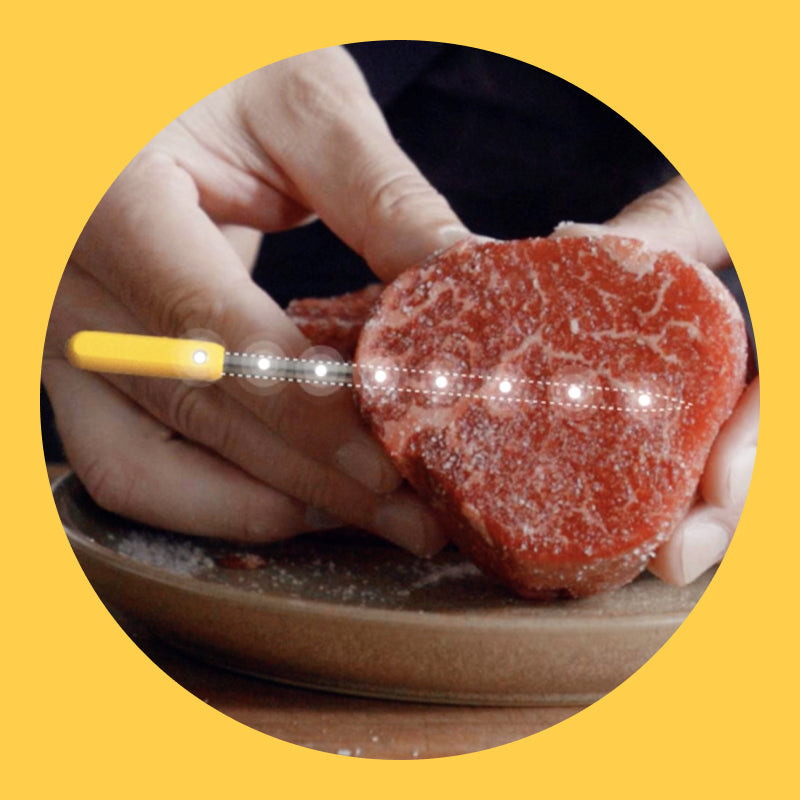
8 sensors give you Total Temperature Awareness™
Having “extra” sensors allows the CPT to do things that other thermometers can’t, including finding the actual lowest internal temperature - even if your insertion is off the mark.
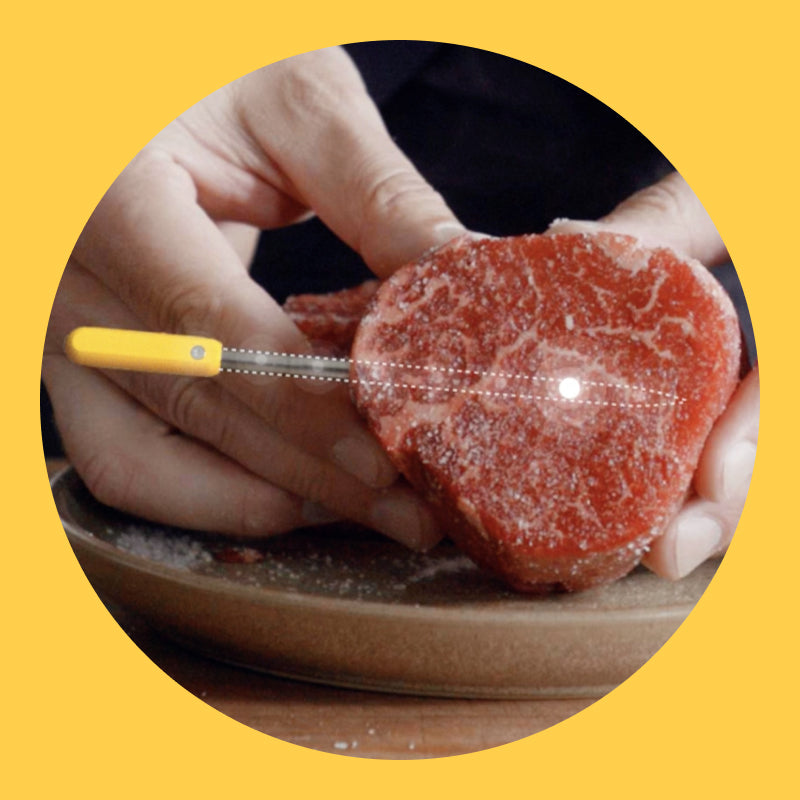
TrueCore™ detection - prevents undercooking
By comparing temps, the CPT finds what we call the TrueCore™ temp, which is the coolest part of the food.
That's the core temp. Very important if your probe is off center by even a little, or if the food is small (filet) or asymmetric (like a chicken or fish).

Surface temp - the real cooking temperature
Water evaporating from the surface of food cools the food a lot, and surface is the temperature the food actually feels as it cooks.
The internal temp can never get hotter than the surface (until it’s cooling).
Press the temp button on the display to toggle temps (core, surface, ambient).
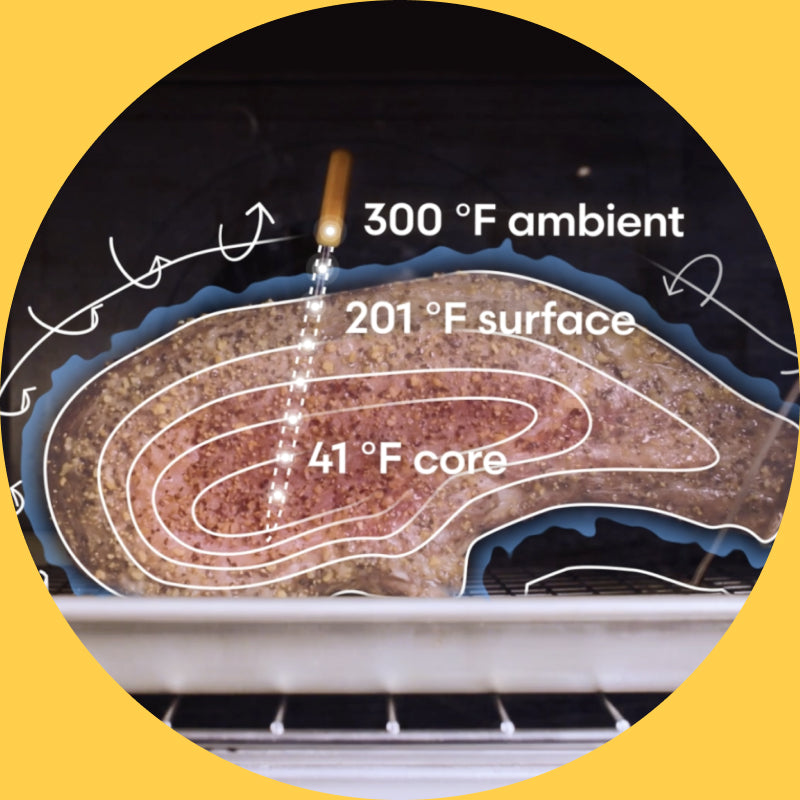
Ambient temp - your oven is lying
The ambient temp will be lower than your oven (or smoker) is set to, sometimes by 100 degrees or more. Don’t panic! This is normal. The temp near the surface of your food is much cooler.
Relatively cool (212ºF) steam coming from the food mixes with the hot surrounding air, and the ambient temp reflects that.
A roast creates its own weather!
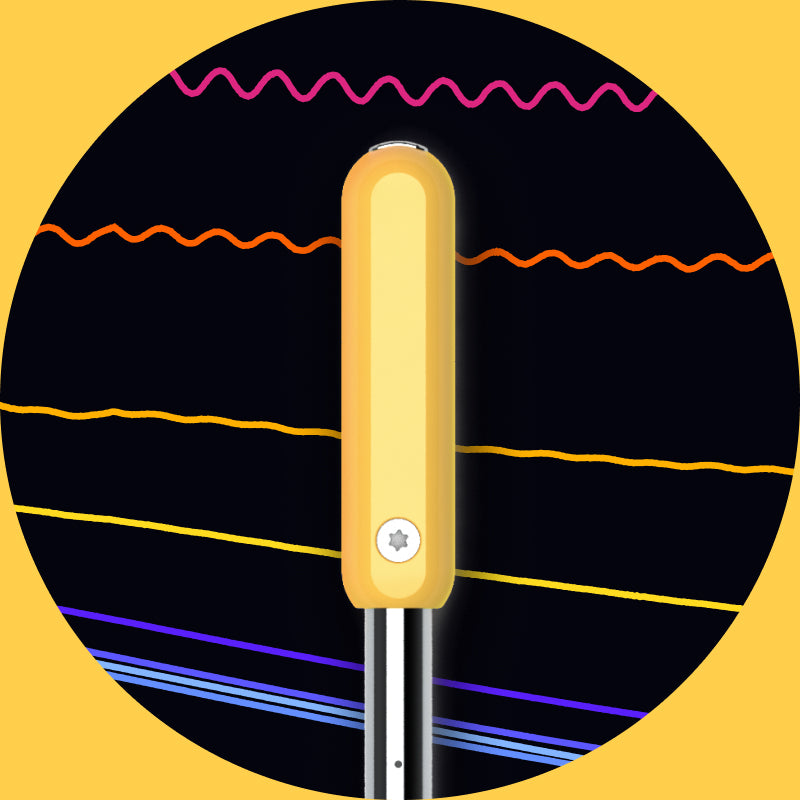
All the important stuff is calculated inside the thermometer itself
With other “smart” thermometers, the important data are stored and critical calculations are done remotely - on your phone or in the cloud. The CPT does everything onboard!
If the connection ever gets interrupted, all the "missing" data appears on reconnect.

Use MeatNet™ tools to extend wireless range
Cooking set-ups are full of radio obstacles. Use a range-extender - the Booster or Display - near your smoker/grill to catch and boost the weakened signal.
Each MeatNet™ tool adds up to 330ft (100m) of unobstructed signal strength.
For best signal, keep a clear line-of-sight between linked tools.

Resting your meat
Carryover (resting) is not part of the prediction. The only real advantage to resting meat is that it carves easier.
Slice steaks/filets/smaller foods immediately to minimize carryover.
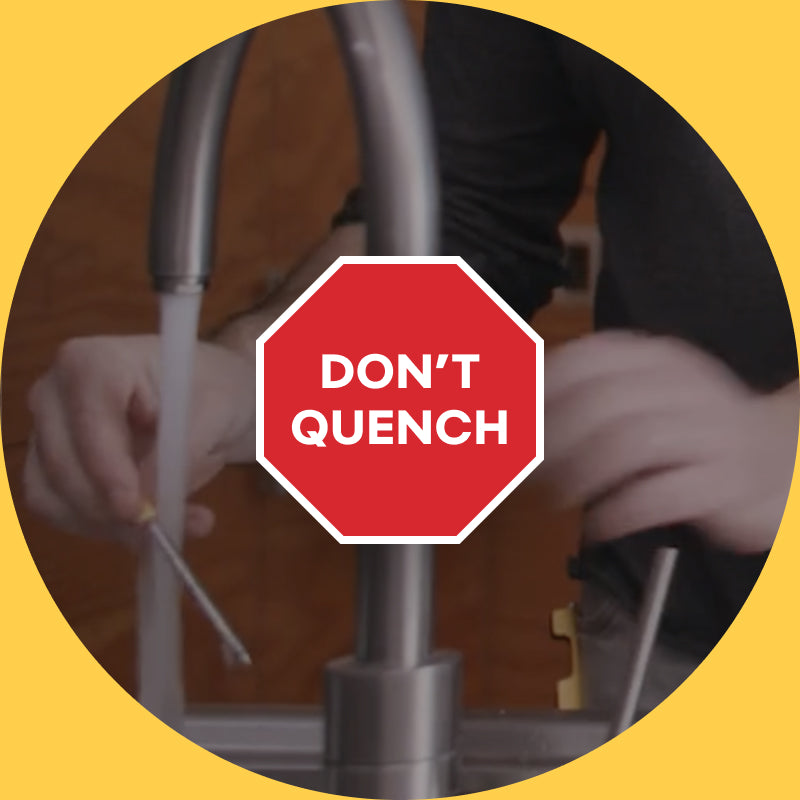
Don’t be afraid to scrub
The ceramic handle is very strong and scratch resistant. Use steel wool or abrasive cleansers (e.g. Barkeeper’s Friend) to make the yellow handle shiny and new again.
Use a non-abrasive scrubby on the steel probe.
Don’t “quench” a hot thermometer - wait for it to cool before soaking.
Reference Guide: Temps
Get "USDA Food Safe" with the Combustion App
The Combustion App tells you when your food is safe to eat, applying the food-safety standards of the US government (USDA/FDA).
TLDR: with the CPT, you can cook safely without overcooking your food.
By default, the app references USDA simplified standards.
But it’s highly recommended - to turn on “integrated” standards.
Select your protein, preparation, and whether you’re eating it hot or serving it later.
Integrated standards track combined time-and-temps as your food heats up.
Meeting these standards is just as effective as reaching a very high temp.
Either method kills 99.99999% of bacteria (that’s the USDA-safe level for chicken).
For example, 150ºF for 4.2 min is just as effective as cooking to 165ºF.
The USDA Food Safe feature is very easy to use and the Predictive Thermometer does all the math.
With it, you never have to overcook anything “just to be sure.”
Chef-recommended temps
What temperature you cook to depends not only on the protein you're cooking, but the style of cooking and your preferred results. It's a matter of taste.
Listing preferred cooking temps would require a huge page of its own (or maybe a whole site), but here are some of the temps we use frequently (remember, home cooking is at your own risk):
- Salmon: 120ºF/49ºC
- Steak (med rare): 128ºF/54ºC
- Pork chop (med rare): 140ºF/60ºC
- Hamburger (med): 140ºF/60ºC
- Chicken (breast): 150ºF/65ºC (for 3 minutes+)
- Bread: 207ºF/97ºC
Cook below USDA simplified standards at your own risk.
(P.S. Every professional chef does.)
Carryover times + temps
We don't recommend resting for most things, but there are some times when it's very useful.
If you plan to rest your food, set the target temp lower to compensate and leave the thermometer in. That way you'll know exactly when to slice and quickly cool your food if it's in danger of going too high.
Carryover effects can vary greatly (depending on temperature differential, water content, mass, and surface area), but they are repeatable with the same cut and same cooking plan.
Keep track! You might not nail it on the first try, but with the Predictive Thermometer you can tune it in.
Precise carryover predictions will be added to the CPT (2024).
Watchouts and questions
Watch out for non-standard chargers
Combustion tools can be charged using standard (5v) USB ports and most USB hub-type products.
If in doubt, a phone charger is a safe bet.
Do not use a “quick charge” port or any other USB port that uses nonstandard voltage. It’s complex, but essentially these types of chargers are relying on the device to tell them how much voltage/amperage to deliver.
The circuitry in “smart chargers” should default to the 5v standard but sometimes they don’t. The industry is a bit unregulated, at least in the US.
Although most quick-charge ports and “smart” charging stations are safe for the CPT, we cannot guarantee that. In other words, it’s probably fine (and I’ve done it myself) but it’s at your own risk.
A special note: Thermoworks has a VERY nonstandard charger for one of its products that delivers 12v of power. Do not use that to charger any of our tools, or anything else – other than the thing it comes with. It will destroy anything else you plug into it, with a vengeance.
Never microwave!
First off, you should never microwave metal. It will create arcs and potentially destroy your microwave, voiding the warranty on anything and everyone around.
Secondly, NEVER EVER MICROWAVE THE PREDICTIVE THERMOMETER.
Not only is it largely metal, it’s antenna is specifically tuned to the wavelength of a microwave (Bluetooth is the same length).
As a consequence, it’s even more dangerous than microwaving a spoon (for instance).
One word: plasma.
A microwave (or trivection oven) also has a fine mesh screen that stops the microwaves from cooking things in the vicinity, like butter keepers, faces, parakeets, etc. This screen is a highly effective Bluetooth signal blocker.
Even if you’re not using the microwave function, it will be extremely difficult to get a good signal out of an oven that has microwave capability.
The only exit in that scenario is the oven’s vent holes (typically behind the range) - you may be able to get a signal out if you place a Booster or Display there.
Do not quench!
One non-obvious thing to watch out for is quenching. Don’t do it!
Although the CPT (including the handle) is very durable, it’s not quite indestructible.
Quenching is putting a hot thermometer directly into cold water. The shock of the temperature change can cause the handle to crack or shatter.
The same thing will happen with a pyrex dish or ceramic bakeware. Don’t quench those things either.
Since you asked, a metal pan can also become disfigured or warped by quenching (it’ll show up as a hump in the middle; not good!).
In general, there’s no kitchen item that enjoys quenching, although some items are tolerant.
It’s fine to soak the thermometer to remove stuck-on food, but always wait until it has cooled (ideally to room temp) before doing so.
Putting it in the fridge directly after cooking is not risky. The temp transfer is magnitudes slower.
Display flashing red + screeching?
Overheated! Remove from heat immediately!
Lower sensors (below the min line) must be kept below 220ºF (105C). Upper sensors must be kept below 600ºF (315ºC).
Using the thermometer above these temps may damage your thermometer and may void the warranty.
There’s a bit more detail about that (and what to do if it happens) in the basic troubleshooting guide.
Basic troubleshooting?
- Not seeing surface temp?
- Not seeing graph on the app?
- Prediction not appearing?
- Weak signal?
- Charging troubles?
- Not connecting?
You will find quick answers to relatively common issues (and a few rare ones too) on the Owner’s FAQ.
If you can’t find the answers there, we’re happy to help, of course!


